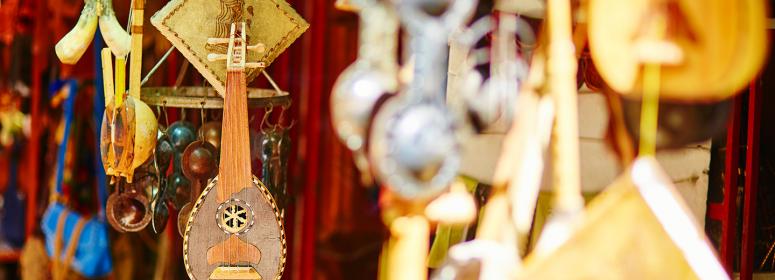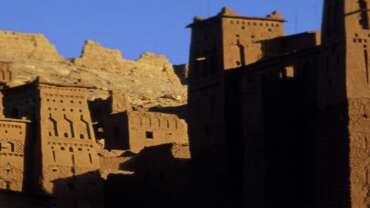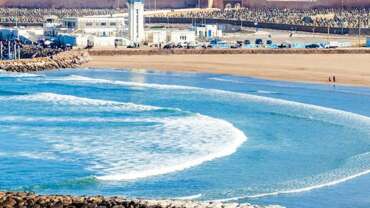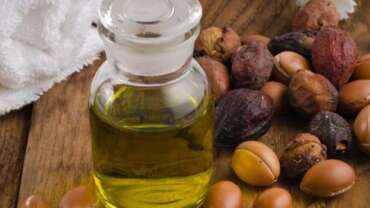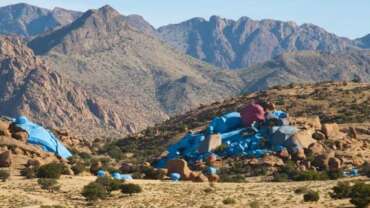Variety of Moroccan Culture
Moroccan culture is primarily Muslim, and it represents a confluence of influences: Amazigh, Arab, Sahrawi, Sub-Saharan African, Mediterranean, Andalusi, Jewish, European, and more. The majority of Morocco’s population identifies as Berber and Arab.
As like all other countries, Morocco is special with its own culture. Futhermore it is also a place of acceptance towards differences. We shall speak to you about its own authentic features, but also the reality where Morocco has become a country where you’ll find an embracing of other cultures and traditions and even a practice in certain corners. This country has truly known the meaning of multitude, given that its culture has changed a lot throughout the history.
As you travel across Morocco, you will discover it is a land of art and history, the country alone has hosted Berbers, Phoenicians, Arabs, South (Sub-Saharan African) and North (Romans, Vandals, Spanish-Andalusians, both Muslim and Jewish): however, the majority of Morocco’s population is Berber and Arab by identity, and at least a third of the population speaks the Amazigh language.
Culture in Agadir-Taghazout
Traditions and History
Culture in Agadir
Much of Agadir’s reputation is built on its bay and its inexhaustible backcountry, but it is also a city of culture, where historic treasures coexist with contemporary events.
Step back from the ocean front and slip into the medina. Lose yourself in alleyways lined with zellige-adorned walls, walk through ornate doors and get acquainted with the craftsmanship of Agadir’s artisans. Then head to the Kasbah, which is perched on a rock 775 feet above the ground. After standing watch over the city for over five centuries, not even the 1960 earthquake could topple it.
The Kasbah serves up a panorama of a city marked by various influences. In the medina there is a museum that pays tribute to Amazigh, or Berber, culture, not to mention artisans making jewelry and musicians filling the air with intoxicating tunes. Music is an important part of Agadir culture, where many festivals are held throughout the year, the most famous of which are the Timitar world music festival and the concert for tolerance.
Finally, Agadir, has a culinary culture with cooking traditions that showcase the region’s ingredients: treat your taste buds with local specialties, such as a delicious monkfish with preserved lemon or a chicken tagine with honey, almonds and grapes.
This is what awaits you in the lovely Agadir – adiverse culture in a smiling, flourishing city.
Culture in Azilal
Azilal, a rich history
Azilal, a city with a thousand facets
Hidden deep in the heart of Morocco, Azilal is one of the country’s little-known gems. Roads converge on this town halfway between the ocean and the desert, where cultures mingle. Arab and Berber traditions contribute to the special atmosphere here.
This intermingling is also reflected in the cuisine, which flatters your palate with a variety of dishes, each of which is more delicious than the last. The local craftsmanship is also stellar: wool is worked artfully into carpets that become charming mementos of your journey.
Proof of the region’s storied history stand all around you. Here, a fortified earthen granary that was used to protect crops in times of scarcity, when famine was a real risk. There, a tighermt, a complex of fortified structures. Over there, fossilized dinosaur remains. During the Mesozoic era, these huge reptiles lived around Azilal. Today, the Demnate Nature Reserve works to preserve their bones and make them accessible to visitors. Casual and serious paleontologists alike should not miss the chance to visit.
Culture in Casablanca
At the Crossroads of Cultures
Cosmopolitan Casablanca
Casablanca is an enigma for historians. Whiles its origins are shrouded in the mysteries of time, the neighborhoods that shape it and the monuments that define it have much to say about vast swaths of its history.
When you explore the port, check out the Sqala Bastion, a fortified complex from the 18th century that is now a chic restaurant-cafe where diners flock to enjoy delicious local dishes. Venture a stone’s throw from the port into the narrow streets of the medina. It was rebuilt after the 1755 earthquake, which makes it the newest medina in the country, as well as one of its most original: within its walls, Arabic-Islamic architecture mixes with European inspiration. In the midst of this eclectic esthetic, artisans still bring life to the district with their daily labors.
An entirely different setting awaits you downtown. Here, the unique urban design, the wide boulevards and the expansive plazas bordered by Art Deco buildings evoke the former colonial occupation.
Of course, no visitor should miss the solemn Hassan II Mosque on the ocean shore; it is one of the biggest and most beautiful mosques in the Muslim world. Walk over the threshold and marvel at the interior decor featuring precious woods, marble and onyx. Look at the pillars and ceilings and admire the symmetry of their arabesques and zelliges. Everywhere you look there are scrolls and embellished doors. It is a wonder.
Meandering through Casablanca, the White City, takes you on a journey through time and space that introduces you to a place shaped by myriad influences.
Culture in Chefchaouen
Naturally bewitching
The enchanting culture of Chefchaouen
With houses built into the mountainside, narrow, winding streets and a haunting blue light that washes over the city, Chefchaouen feels like a dream. This enchanting provincial capital lends itself to strolls, which are perfect for discovering its rich heritage, admiring the architectural treasures that populate its alleys and meeting the people who live and work here.
When the sun starts to set and its rays no longer reach over the walls of the medina, the sky blue buildings of the kasbah transform Chefchaouen into a surreal place. The abundant gardens create an alternating parade of blues and greens, creating a cool oasis right in the city. The Kasbah also serves as a museum with a collection of antique weapons, photographs and textiles.
The city’s crafts are also worth the trip. Its wood, wool and leather goods are especially popular. Visit these artisans and see their passion for their work. If you’re really curious, they will give you a lesson in weaving or wood carving before sending you off with a head full of memories and a suitcase full of souvenirs.
No one can resist the undeniable charms of Chefchaouen!
Culture in El Jadida-Mazagan
The secrets of El Jadida
From the tops of El Jadida’s bastions
El Jadida stands sentry on the shores of the Atlantic. Surrounded by formidable ramparts and punctuated by towers lapped by the ocean, the ancient Portuguese fortified city once known as Mazagan still has a military air to it. Its many remaining bastions give tourists a fantastic view over the city.
Straight ahead lies the medina, with its ocher walls, labyrinthine alleys and the famous Portuguese cistern whose vaults served as a backdrop for Orson Welles’ “Othello”. The historic district is a UNESCO World Heritage site. Continue taking in the sights and look toward the water, where the Sidi Bouafi lighthouse has stood for nearly a century to guide sailors to the entrance to the port.
If the air is clear, you can see the outlying areas, including the small town of Moulay Abdellah to the west. Each year it hosts a moussem, or traditional festival, attended by the country’s most talented horsemen. To the east is the historic city of Azemmour with its pretty urban landscape.
The heights of the fortifications have shown you all the riches of El Jadida. Now it’s time to climb down and get a closer look at these treasures of Moroccan history.
Culture in Errachidia-Midelt -Merzouga
Authenticity and traditional festivals
A mosaic of people and traditions
To appreciate this splendid region that has preserved its authenticity and to soak in its secular culture, you must accept that the present here is still closely tied to the past. The Rissani mausoleum of Moulay Ali Cherif, an ancestor of the Alaouite dynasty, and the ruins of Sijilmassa, an old trade town, are physical reminders of the province’s storied history. They are not to be missed, but you will learn even more about the region’s traditions by interacting with the people.
You can visit museums that highlight the area’s riches, including the Mineral and Fossil Museum on the road to Rissani, the museum of nomadic culture in Erg Chebbi or the Lalla Mimouna Springs Museum in Tinejdad. You can also stay outside and marvel at the Taouzrock carvings that date back to prehistoric times.
The Tafilalet region has more than 400 ksours, fortified villages that used to house communities that lived together and pooled their resources.
The luckiest visitors are those who can attend one of the many cultural and artistic events held here. Choose from the International Date Fair in Erfoud, the Imilchil Wedding Festival, the Merzouga International Festival of World Music or the Apple Festival in Midelt.
No matter what you pick, the cultural wealth of this region will amaze you.
Culture in Essaouira-Mogador
Mogador for ever
Essaouira, city of art and history
Essaouira, the “well drawn” city, holds plenty of surprises. At the end of an alley, you may find a curio, a cultural vestige or a gallery featuring the work of a contemporary artist.
The city gets its special character from its ramparts. They are pierced by monumental doors that stand asworks of art and defense tactics. The ramparts are flanked by two citadels, the Kasbah squala and the Port squala. To get your first look at the city, stroll in the shadows of these historic walls, then go deeper into a maze of alleys and discover the medina. Like the whole city, and like the former Mogador now known as Essaouira, the medina is a mix of Western and Eastern influences. The minaret of Ben Youssef Mosque rises above and many consular homes dot its streets.
Its standing as a city at the crossroads of civilizations also makes Essaouira a beloved place for artists. There are various galleries to celebrate beauty and creativity. Check out the artists’ café, MareaArte Bleu Mogador and the Sidi Mohamed Ben Abdallah Museum, which honors the region’s history of craftsmanship and folk traditions.
The myriad beauties of Essaouira are sure to blow you away!
Culture in Fez-Meknes
The capital of Moulay Ismail
The bewitching Meknes
Meknes is awash in an aura of enchantment. The ramparts that guard it seem to protect the city from the world around it. Walking through its gates is like returning to the era of the sultans.
The beauty and charms of the medina earned it a spot on the UNESCO register. Its position as a former seat of power and prestige makes Meknes the “Versailles of Morocco”, where Sultan Moulay Ismail ruled as sovereign. Stop by his palace to discover the monumental door he used as an entrance – the same one that made such an impression on writer Pierre Loti. Beyond the palace, the mausoleum still holds the remains of the patron of Meknes. Elsewhere, his royal stables and granaries will leave you speechless.
Meknes is nestled within a fertile hinterland full of orchards, olive groves and vineyards. A few miles from the city lie the Roman ruins of Volubilis, which are still one of the most beautiful archaeological sites on the planet.
Get lost in Meknes as you soak up its unique ambiance, a harmonious blend of humankind’s greatest achievements.
Culture in Marrakech
The charm of Marrakech
Marrakesh, a hotbed of Moroccan history
Bathed in the pink glow of its adobe walls, the lovely Marrakesh throws open its doors to all culture lovers. Architectural masterpieces and traces of the human experience stand within these walls. Marrakesh is composed of an array of influences that defy eras, a mosaic of colors where the wonders of the past and the present come into focus.
Stroll through the city. Walk through a gate into the medina and advance into the old district. This is where you’ll find the beating heart of the former royal capital and the famous minaret of the Koutoubia Mosque. The tower rises 250 feet like a beacon over Marrakesh. It is also a signature of Islamic art, for its design and proportions inspired Hassan Tower in Rabat and the Giralda of the Seville Cathedral.
Press on a bit further to the expansive Menara gardens created by the Almohad Caliphate to enjoy the cool calm of its olive tree-lined paths. As the sun sinks toward the horizon, the place takes on an enchanting amber glow that evokes the tales of the Arabian Nights.
Other types of beauty are found along the streets. Get lost in time as you marvel at these treasures bequeathed to the ocher city by history.
Culture in Ouarzazate-Zagora-Tinghir
Crafts and authentic traditions
The wonders of southern Morocco!
Ouarzazate, Zagora and Tinghir in the east of Morocco represent the country’s cultural diversity. They bear witness to the most deeply seated traditions, but contemporary creations are also honored with nods to some of cinema’s finest hours.
Ouarzazate is one of the gateways to the desert. The Tifoultoute Kasbah stands guard just outside the city. Film buffs will recognize these landscapes: this is where David Lean shot “Lawrence of Arabia”. The movies rule in Ouarzazate: its studios were used for “Babel” with Brad Pitt, “The Jewel of the Nile” with Michael Douglas, “The Last Temptation of Christ” by Martin Scorsese, “Tea in the Sahara” with John Malkovich, “Gladiator” and “Kingdom of Heaven” by Ridley Scott, and many other internationally known productions.
Other aspects of Moroccan heritage are also worth a visit in the region, such as the Aït Beck ksar (fortress), which towers above the Ounila valley. Its structures are built into the side of a hill right up to its summit, where an old granary still stands. A bit further in Imadri, you can visit cliff dwellings. Finally, look to the Draa valley for Tamgrout, where another village carved into the same rock is home to one of the country’s oldest and most famous Koranic libraries. Some of the manuscripts stored here are nearly 1,000 years old!
Tinghir and Zagora also have plenty of attractions. In Tinghir, you can walk through the Aït El Haj mellah. Along narrow streets between the shade of adobe walls and ocher-tinged light, explore the old Jewish quarter and a slice of the city’s past. The atmosphere around Zagora is totally different. Go as far back as prehistoric times at Tazzarine, where rocks bear inscriptions that are 5,000 years old and attest to the country’s many millennia of history.
Rock carvings, majestic kasbahs and Hollywood studios… Morocco is most assuredly a land of contrasts!
Culture in Oujda-Saïdia
City Tours
Relaxation and exploration
Saïdia and Oujda are two places that complement each other perfectly. Saïdia, the blue pearl of Morocco, welcomes you to its cutting-edge hotels that are as comfortable as they are environmentally friendly.
Oujda, meanwhile, has a different feel altogether. Going to this inland city removed from the Mediterranean and pacing along streets with a thousand years of historyis like entering an ancient town. Get a glimpse of “Old Morocco” in the medina, a neighborhood ringed by high walls that seems to have been forgotten by time.
Oujda is not, however, a dusty museum mired in the vestiges of its bygone glory. It is a modern city that embraces the new, as evidenced by the Palais Sebti, the cultural hub of Oujda. This venue hosts receptions, exhibitions and all kinds of events celebrating music, painting and the arts in general.
While Saïdia can flaunt its Mediterranean delights, Oujda has no cause for jealousy, for it has all the historical treasures.
Culture in Rabat
The secrets rbatis
Living culture
Rabat is rife with landmarks and monuments, but it is also known for the vitality of its intangible heritage, such as the craftsmanship of its artisans. See for yourself by heading to the medina. This is where generations of artists work with fabric, leather, gold, silver and, of course, the celebrated Rabat carpets, each of which is a masterpiece of finesse and harmony. In nearby Salé, pottery, metalwork and weaving are stand-outs with an entire complex is devoted to these crafts.
Lastly, Rabat is a city of music. The city has transformed the Mawazine World Rhythms Festival into an international event. Each year, free concerts showcase the biggest national and international stars to the delight of tens of thousands of attendees. But the Moroccan capital pulses to the rhythm of world music throughout the year. The sounds of Andalusia and the swing of jazz bands, for example, are also honored with major events.
Culture abounds in Rabat, bringing the city to life and fostering a sense of playfulness.
Culture in Safi
Between architectural heritage and history
Enjoy architecture and active pursuits in Safi
Tall battlements, imposing towers and old canons that still point toward the ocean are what define the war-ready silhouette of the Kechla in Safi. Itisanimpressive sight: the fort overlooks the Atlantic Ocean, whose waves lap its foundation, giving the impression it is built right on the water. It is the largest remnant of the Portuguese occupation, though elsewhere in the city, you can see the vestiges of Africa’s first Gothic cathedral which also evoke the colonial period.
Though it has some European features, Safi is a typical Moroccan city. As soon as you enter the medina, let its aromas and sounds guide you and you will find a completely different atmosphere – morelively, restless. The merchants arrange their goods and wheel and deal over 1,001 products: rugs, leather, lamps and, of course, pottery. As one of Morocco’s ceramic capitals, Safi boasts a neighborhood devoted to the production of terracotta and clay trinkets and a museum that celebrates this delicate craft.
It’s true that surfers are in heaven in Safi, but anyone seeking authenticity will be equally delighted.
Culture in Tanger-Tetouan
The treasures of Tetouan
Tetouan: The Mediterranean Sea on the horizon
With limestone walls and the grace of a dove, Tetouan welcomes you to streets infused with a subtle blend of cultures.
The city has tinges of Andalusia that can be sensed in the narrow streets lined with green and white houses that evoke Seville and Granada. For a better look, enter the medina, one of the busiest and most beautiful in all Morocco and a UNESCO World Heritage site. Artisans ply their trades in the plazas and in front of their workshops. Catch a painter working on a wood canvas or, at Guersa El Kébira, embroidery specialists and Jebala women selling their mendils, shawls splashed with red, blue or white. Be sure to visit the Mellah, the medina’s Jewish section, which has a parade of jewelry stores and a central street that leads to the Royal Palace, an emblem of Spanish-Moorish art.
When you leave the old city, you will find yourself surrounded by a completely different sort of architecture. Tetouan was briefly part of a Spanish protectorate, which left behind monuments to European style: the old Spanish casino, Notre Dame de la Victoire church and the public library all add to the unique esthetics of the city.
Finally, there are festivals that keep the cultural scene fresh, such as a Mediterranean film festival, a comics festival and an event dedicated to women’s voices.
Discover Tetouan and dive into a deeply historic city. See for yourself how cultures mingle and how the city stays authentic while remaining open to outside influences.
Culture in Taroudant
Berber crafts and traditions
The new Marrakesh
Taroudant is a gem of southern Morocco with ramparts that envelop one of the country’s most beautiful cities. The crenellated walls extend for nearly four miles, flanked by 130 towers with ornate doors whose overall effect gives Taroudant its unique ambiance. When the sun is at its zenith, find respite by strolling in the soothing shade of these walls.
The city center is equally appealing, as this former Saadian capital holds many treasures. Start with the medina, where the narrow streets and tall facades of the old quarter make for an intriguing walk. Wandering through its alleys is an introduction to traditional Morocco, as you soak up the sounds and smells of everyday life.
Then explore the souks because, although Taroudant is a city of art and history, it is no less a buzzing hive of merchants who carefully arrange their stalls and ply their goods. The Berber (Amazigh) souk is particularly famous. Each day, dishes, carpets, lamps and foods are spread out for sale, so the locals can do their routine shopping and tourists can pick up charming souvenirs.
Finally, along the perimeter of the ramparts, tanners treat their hides to make the leather that is a Taroudant hallmark. They do their work the old-fashioned way, using their hands for tools to craft bags, poufs and sandals that delight visitors.
As you can see, this “Little Marrakesh” has no reason to be jealous of its big sister and deserves a special trip!



